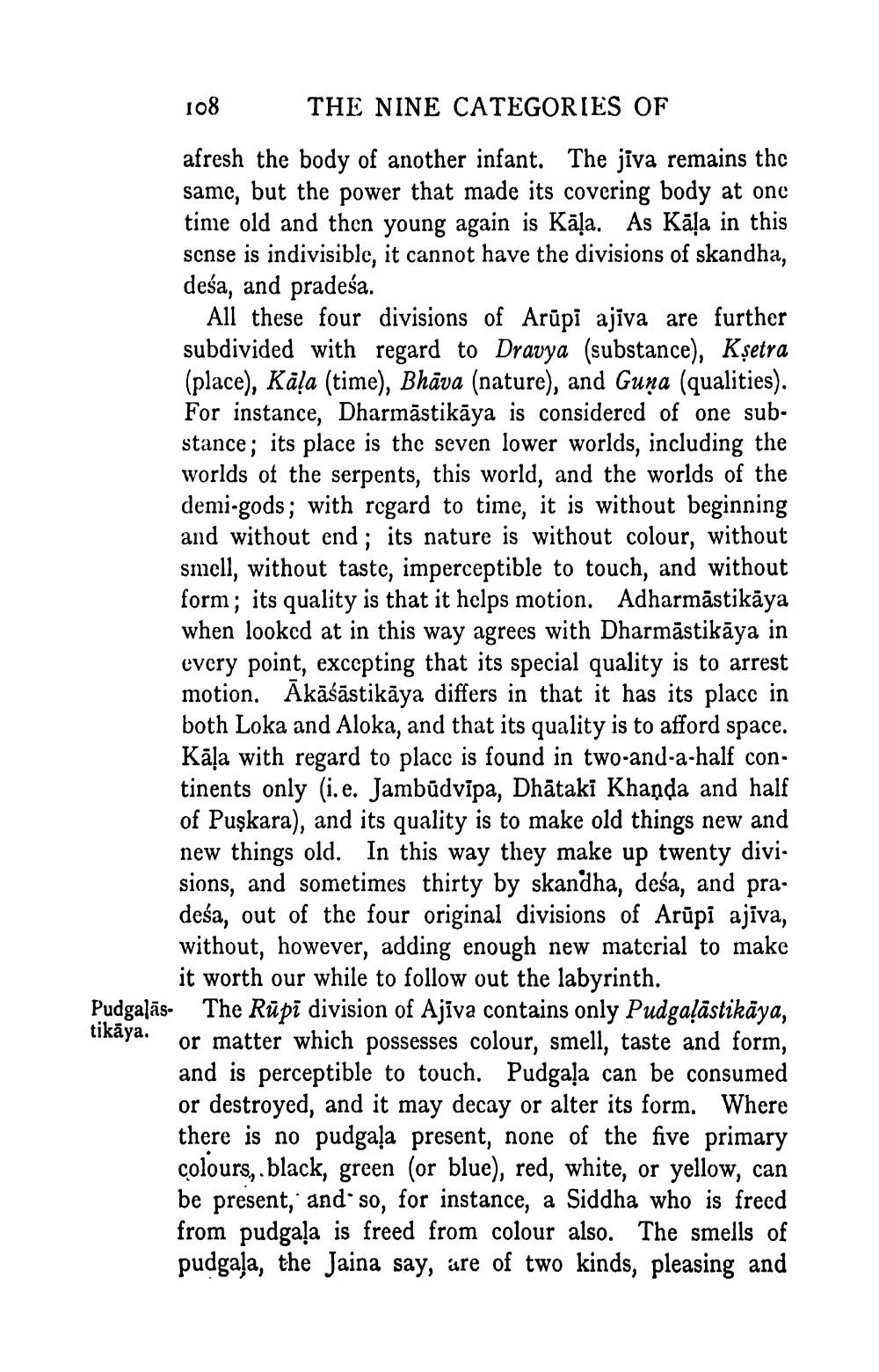________________
108 THE NINE CATEGORIES OF afresh the body of another infant. The jiva remains the same, but the power that made its covering body at one time old and then young again is Kāļa. As Kāļa in this sense is indivisible, it cannot have the divisions of skandha, deśa, and pradeśa.
All these four divisions of Arūpi ajiva are further subdivided with regard to Dravya (substance), Kșetra (place), Kāļa (time), Bhāva (nature), and Guna (qualities). For instance, Dharmāstikāya is considered of one substance; its place is the seven lower worlds, including the worlds of the serpents, this world, and the worlds of the demi-gods; with regard to time, it is without beginning and without end; its nature is without colour, without smell, without taste, imperceptible to touch, and without form; its quality is that it helps motion. Adharmastikāya when looked at in this way agrees with Dharmāstikāya in every point, excepting that its special quality is to arrest motion. Akāśāstikāya differs in that it has its place in both Loka and Aloka, and that its quality is to afford space. Kāļa with regard to place is found in two-and-a-half continents only (i.e. Jambūdvipa, Dhātaki Khanda and half of Puşkara), and its quality is to make old things new and new things old. In this way they make up twenty divi. sions, and sometimes thirty by skandha, deśa, and pra. deśa, out of the four original divisions of Arūpi ajīva, without, however, adding enough new material to make
it worth our while to follow out the labyrinth. Pudgalās. The Rūpī division of Ajiva contains only Pudgaļāstikāya,
or matter which possesses colour, smell, taste and form, and is perceptible to touch. Pudgaļa can be consumed or destroyed, and it may decay or alter its form. Where there is no pudga!a present, none of the five primary colours, black, green (or blue), red, white, or yellow, can be present, and so, for instance, a Siddha who is freed from pudgaļa is freed from colour also. The smells of pudgaļa, the Jaina say, are of two kinds, pleasing and
tikāya.




